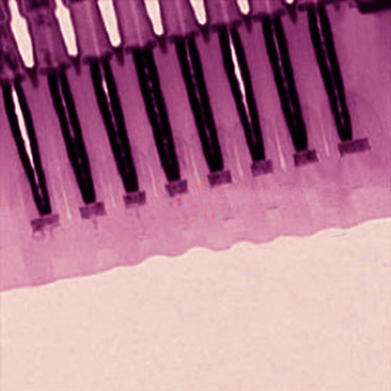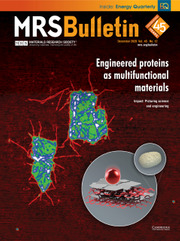Crossref Citations
This article has been cited by the following publications. This list is generated based on data provided by
Crossref.
Hwang, Cheol Seong
and
Dieny, Bernard
2018.
Advanced memory—Materials for a new era of information technology.
MRS Bulletin,
Vol. 43,
Issue. 5,
p.
330.
Callaert, Carolien
Bercx, Marnik
Lamoen, Dirk
and
Hadermann, Joke
2019.
Interstitial defects in the van der Waals gap of Bi2Se3.
Acta Crystallographica Section B Structural Science, Crystal Engineering and Materials,
Vol. 75,
Issue. 4,
p.
717.
Tominaga, Junji
2019.
The Design and Application on Interfacial Phase‐Change Memory.
physica status solidi (RRL) – Rapid Research Letters,
Vol. 13,
Issue. 4,
Saito, Yuta
Fons, Paul
Mitrofanov, Kirill V.
Makino, Kotaro
Tominaga, Junji
Robertson, John
and
Kolobov, Alexander V.
2019.
Chalcogenide van der Waals superlattices: a case example of interfacial phase-change memory.
Pure and Applied Chemistry,
Vol. 91,
Issue. 11,
p.
1777.
Lee, Dongheon
Lee, Kyeongpung
Yoo, Dongsun
Jeong, Wonseok
and
Han, Seungwu
2020.
Crystallization of amorphous GeTe simulated by neural network potential addressing medium-range order.
Computational Materials Science,
Vol. 181,
Issue. ,
p.
109725.
Mitrofanov, K. V.
Saito, Y.
Miyata, N.
Fons, P.
Kolobov, A. V.
and
Tominaga, J.
2020.
Effects of electric and magnetic fields on the resistive switching operation of iPCM.
Applied Physics Letters,
Vol. 116,
Issue. 20,
Tominaga, Junji
Miyata, Noriyuki
Sumi, Satoshi
Awano, Hiroyuki
and
Murakami, Shuichi
2020.
Topologically protected spin diffusion and spin generator using chalcogenide superlattices.
npj 2D Materials and Applications,
Vol. 4,
Issue. 1,
Podpirka, Adrian
Gagnon, Jarod
Zgrabik, Christine
Pierce, Jonathan
and
Shrekenhamer, David
2020.
Role of substrate temperature and tellurium flux on the electrical and optical properties of MBE grown GeTe and Sb2Te3 thin films on GaAs (100).
Journal of Vacuum Science & Technology B, Nanotechnology and Microelectronics: Materials, Processing, Measurement, and Phenomena,
Vol. 38,
Issue. 3,
Alakbarova, T. M.
Meyer, Hans-Jürgen
Orujlu, E. N.
Amiraslanov, I. R.
and
Babanly, M. B.
2021.
Phase equilibria of the GeTe−Bi2Te3 quasi-binary system in the range 0–50 mol% Bi2Te3.
Phase Transitions,
Vol. 94,
Issue. 5,
p.
366.
Seidzade, A. E.
Orujlu, E. N.
Babanly, D. M.
Imamaliyeva, S. Z.
and
Babanly, M. B.
2022.
Solid-Phase Equilibria in the SnTe–Sb2Te3–Te System and the Thermodynamic Properties of the Tin–Antimony Tellurides.
Russian Journal of Inorganic Chemistry,
Vol. 67,
Issue. 5,
p.
683.
Orujlu, E. N.
Alakbarova, T. M.
and
Babanly, M. B.
2024.
GeTe–Bi2Te3–Te System.
Russian Journal of Inorganic Chemistry,
Vol. 69,
Issue. 8,
p.
1208.
Orujlu, E. N.
Alakbarova, T. M.
and
Babanly, M. B.
2024.
GeTe–Bi<sub>2</sub>Te<sub>3</sub>–Te System.
Žurnal neorganičeskoj himii,
Vol. 69,
Issue. 8,
p.
1144.
Nabiyev, Elnur R.
Orujlu, Elnur N.
Babanly, Dunya M.
Imamaliyeva, Samira Z.
Yusibov, Yusif A.
and
Babanly, Mahammad B.
2025.
Standard Thermodynamic Functions of Sb2Te3-Rich Germanium Antimony Tellurides: EMF Measurements.
International Journal of Thermophysics,
Vol. 46,
Issue. 10,


